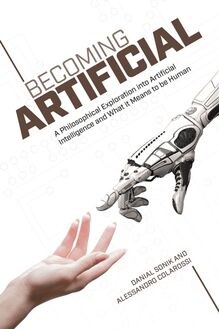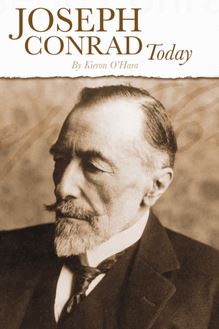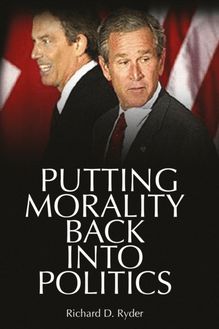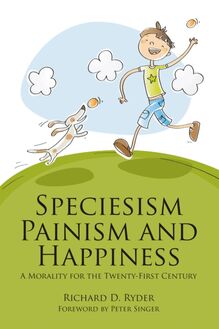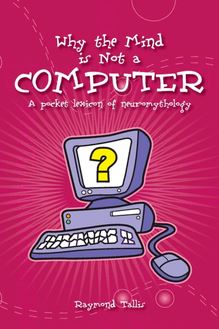-
 Univers
Univers
-
 Ebooks
Ebooks
-
 Livres audio
Livres audio
-
 Presse
Presse
-
 Podcasts
Podcasts
-
 BD
BD
-
 Documents
Documents
-
- Cours
- Révisions
- Ressources pédagogiques
- Sciences de l’éducation
- Manuels scolaires
- Langues
- Travaux de classe
- Annales de BEP
- Etudes supérieures
- Maternelle et primaire
- Fiches de lecture
- Orientation scolaire
- Méthodologie
- Corrigés de devoir
- Annales d’examens et concours
- Annales du bac
- Annales du brevet
- Rapports de stage
La lecture à portée de main
Vous pourrez modifier la taille du texte de cet ouvrage
Découvre YouScribe en t'inscrivant gratuitement
Je m'inscrisDécouvre YouScribe en t'inscrivant gratuitement
Je m'inscrisEn savoir plus
Vous pourrez modifier la taille du texte de cet ouvrage
En savoir plus

Description
Sujets
Informations
| Publié par | Andrews UK |
| Date de parution | 08 novembre 2016 |
| Nombre de lectures | 0 |
| EAN13 | 9781845409241 |
| Langue | English |
Informations légales : prix de location à la page 0,0374€. Cette information est donnée uniquement à titre indicatif conformément à la législation en vigueur.
Extrait
Your Brain’s Politics
How the Science of Mind Explains the Political Divide
George Lakoff and Elisabeth Wehling
SOCIETAS
essays in political
& cultural criticism
imprint-academic.com
2016 digital version converted and published by
Andrews UK Limited
www.andrewsuk.com
Copyright © George Lakoff and Elisabeth Wehling, 2016
The moral rights of the author have been asserted.
No part of this publication may be reproduced in any form without permission, except for the quotation of brief passages in criticism and discussion.
Imprint Academic, PO Box 200, Exeter EX5 5YX, UK
First published in German by Carl-Auer Publishers, Heidelberg, Germany, 2008
To Kathleen and to Eve
A Note About This Book
Over the past decades, research in cognitive science and linguistics has uncovered astounding facts about the human mind. This is a dialogical introduction to these findings and their implications for politics.
Enjoy!
George Lakoff and Elisabeth Wehling
Berkeley, August 2016
1. Normal Thought: Reasoning in Metaphors
1.1. The Embodied Mind: Things we don’t know about our reasoning
Elisabeth Wehling (E.W.) You once wrote that metaphors can start wars, and that the second Gulf War and Iraq War were largely motivated by metaphors. [1]
How on earth do cognitive linguists come to ascribe this much power to a harmless, rhetoric device?
George Lakoff (G.L.) It has to do with how our brains function. We all reason about the world largely in terms of metaphor. Metaphors are omnipresent, and not just in political discourse. They structure people’s everyday language and reasoning. [2] And yes, metaphors have a firm grip on the political decision-making of individuals and of whole nations. [3] There is not a single political issue that we can reason about in entirely literal terms, without using metaphor. People’s understanding of the world is largely metaphoric, day in and day out.
E.W. What is startling is the fact that folks don’t know this, that they are completely unaware of this fact about their own reasoning. But then again, most people hold quite a few entirely false assumptions about how their minds work.
G.L. Exactly. Let’s go through the four biggest mistaken assumptions about human thought.
First, people assume that thought is conscious. Well, that’s wrong. Most thought, an estimated 98 percent, is completely unconscious. [4]
Second, a lot of us believe that human rationality is a thing that exists somehow independent of our bodies. That’s also not true. Reasoning is a physical process that depends on our bodies and the physical realities of our brains. [5]
Third, many folks hold that reasoning is universal, meaning that all people reason in the same way. Wrong again. People do not all share one universal way of reasoning. They reason about the world differently, partly because their minds have acquired distinctive structures through their cultural and individual experiences. [6]
Fourth, people believe that humans can understand things as they “literally” exist in the world, and that they can talk about them in an objective way. Well, that’s not true. We reason and speak in terms of metaphor all the time without noticing it. Abstract ideas, for instance, cannot readily be reasoned or talked about in any truly meaningful way without the use of metaphor.
Thus, in order to understand how metaphors define political thought and action - and how they can in fact lead to warfare between nations - we need to consider the basic mechanisms of human cognition. How do we understand the world around us on an everyday basis? Well, more often than not, in terms of metaphor.
E.W. That sounds nothing like the conventional understanding of metaphors, which is that they are a matter of language and language only. Aristotle, for instance, described metaphor as an artistic form of language.
G.L. Most people think of metaphor as a matter of words and language, and that conception has spanned over 2,500 years of Western scholarship. But over the past four decades, cognitive science research has brought about groundbreaking findings that force us to change many of our traditional assumptions about how human language and thought work.
Today we know that metaphors are by no means a matter of “language and language only”. Metaphors structure our everyday cognition, our perception of reality. They are a matter of thought, they are a matter of language, and they are a matter of actions.
E.W. Our readers might say: Language? Sure. Thought? Maybe. But actions?
G.L. And from where do our actions emerge, if not from our thoughts?
E.W. Fair enough. Let’s talk about the day that Conceptual Metaphor Theory [7] was born.
G.L. We are in the seventies. I’m a young professor, teaching at the Linguistics Department at the University of California at Berkeley. It’s the spring semester and I’m teaching a course on metaphors. It’s early in the afternoon. Outside, it’s raining. We are in the San Francisco Bay Area, it rains all the time.
The students have spent the week reading some text or other on metaphors - that is, conventional metaphors - and we start class by discussing their reading notes. We are fifteen minutes into class when the door opens and a soaking wet student enters. She apologizes for being late, sits down, and opens her book. She seems distressed, and she is clearly struggling to hold herself together. But she doesn’t say anything, and so we continue on with our discussion. Finally, it’s her turn to share her reading notes. She starts talking, but after the first few words she breaks into tears. We look up at her, alarmed and concerned. I ask her what the matter is and she replies, sobbing, “I’m having a metaphor problem with my boyfriend. Maybe you can help. He says that our relationship hit a dead end street.”
E.W. And so?
G.L. Well, let’s remember now, this is the seventies. We’re in Berkeley, at the university that is the home of the Free Speech Movement. We’re in the San Francisco Bay Area and Berkeley is at the epicenter of the cultural revolution of 1968. In short, we are living in extraordinary times.
So, since we can tell that the student is going through a personal crisis, we embrace it, in the spirit of the time. We turn to a collective discussion of the crisis at hand.
We are a good way into this therapeutic group discussion, when we say, “Okay, look, your boyfriend says the relationship hit a dead end street. That means you can’t keep going the way you’re going. You may have to turn back.” At this point, we realized that we were speaking of love in terms of travel. And we collected more and more examples: “It’s been a bumpy road,” “We’re at a crossroads,” and so on. And we realized that the metaphor was not in the words, it was part of the reasoning that lay behind all of the particular linguistic expressions.
E.W. The young man didn’t use a metaphor just to break the news to his soon-to-be ex-girlfriend in a rhetorically aesthetic manner. His underlying reasoning was in terms of that metaphor.
G.L. Yes. In his mind a relationship was a vehicle that was supposed to help you go places in life, not take you to a dead end street. So when he felt that things were not going anywhere, he decided to get out .
E.W. He used a very common metaphor, namely Love Is A Journey. Many people use this metaphor when making relationship decisions.
G.L. And in his case, it meant ending a relationship that was stuck , that was not getting him anywhere.
E.W. What became of your student?
G.L. She is happily married, to another man.
1.2. Metaphoric Thought is Physical: How metaphors enter our brain
E.W. There’s scientific evidence that we reason in terms of metaphors partly because of how our brains function. As we grow up, we automatically acquire a large number of so-called primary metaphors, without having consciously chosen any of them. [8]
G.L. Right. Take the More Is Up metaphor as an example. This metaphor is found throughout the world and across cultures. People speak of rising and falling prices. Stocks can go through the roof or be in the basement . Based on this metaphor, more is construed as higher up in space and less as lower down in space. And these mappings are asymmetric. We don’t have the opposite mapping. We don’t have a metaphor that construes more as down . We don’t say, “Property prices are at an all-time low ” to mean that property has become more expensive over the past years.
E.W. But it is merely in our minds that prices rise . In reality, they do no such thing. They become more or less, a phenomenon of quantity, not verticality, but we perceive them as rising or falling because our minds automatically apply the More Is Up metaphor.
The interesting question is, why, of all things, do we think about prices as moving around, up and down, and up again? Why do we use a metaphor that construes quantity in terms of verticality?
G.L. The answer lies in our everyday experience. When you fill a glass with water, the more water you add, the higher the water level rises. When you put a stack of books on a table, the stack grows higher as you add more books to it. We all share this experience of seeing quantity correlate with verticality.
Quantity and verticality are processed in different parts of the brain. Verticality is processed in a region that has to do with physical orientation in the world. Quantity is processed in a region that handles numbers and masses. The two areas are not even next to each other in the brain. Yet there are neural connections between them.
E.W. Are we saying that all reasoning is metaphorical?
G.L. No. Take the example of the wa
-
 Univers
Univers
-
 Ebooks
Ebooks
-
 Livres audio
Livres audio
-
 Presse
Presse
-
 Podcasts
Podcasts
-
 BD
BD
-
 Documents
Documents
-
Jeunesse
-
Littérature
-
Ressources professionnelles
-
Santé et bien-être
-
Savoirs
-
Education
-
Loisirs et hobbies
-
Art, musique et cinéma
-
Actualité et débat de société
-
Jeunesse
-
Littérature
-
Ressources professionnelles
-
Santé et bien-être
-
Savoirs
-
Education
-
Loisirs et hobbies
-
Art, musique et cinéma
-
Actualité et débat de société
-
Actualités
-
Lifestyle
-
Presse jeunesse
-
Presse professionnelle
-
Pratique
-
Presse sportive
-
Presse internationale
-
Culture & Médias
-
Action et Aventures
-
Science-fiction et Fantasy
-
Société
-
Jeunesse
-
Littérature
-
Ressources professionnelles
-
Santé et bien-être
-
Savoirs
-
Education
-
Loisirs et hobbies
-
Art, musique et cinéma
-
Actualité et débat de société
- Cours
- Révisions
- Ressources pédagogiques
- Sciences de l’éducation
- Manuels scolaires
- Langues
- Travaux de classe
- Annales de BEP
- Etudes supérieures
- Maternelle et primaire
- Fiches de lecture
- Orientation scolaire
- Méthodologie
- Corrigés de devoir
- Annales d’examens et concours
- Annales du bac
- Annales du brevet
- Rapports de stage

